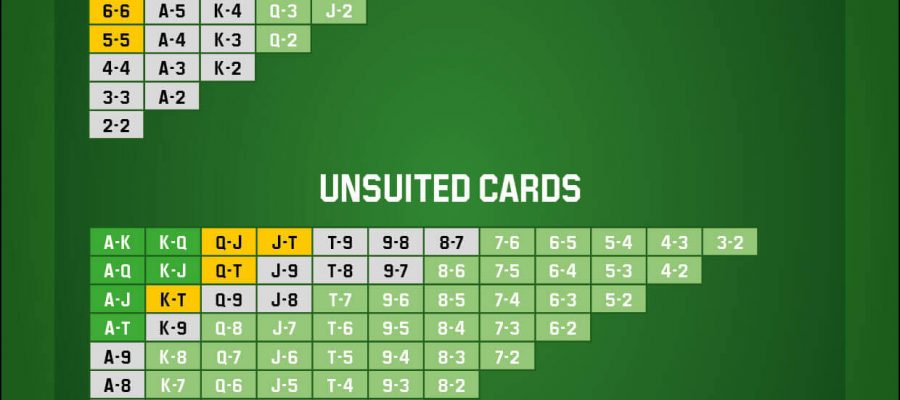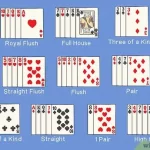Content Table:
Playing Poker: Starting From the Basics
Understanding the basics of poker is essential for anyone looking to enter the world of this classic card game. Poker involves a standard 52-card deck and a variety of game formats, each with its own rules and strategies. This guide will cover the foundational elements of poker, including card rankings, hand rankings, essential terminology, and the betting structure.
Card Rankings
One of the first poker basics you need to master is the ranking of the cards. The sequence from high to low is as follows:
- Ace (A)
- King (K)
- Queen (Q)
- Jack (J)
- Ten (T)
- Nine (9)
- Eight (8)
- Seven (7)
- Six (6)
- Five (5)
- Four (4)
- Three (3)
- Two (2)
It’s important to note that the Ace can serve a dual role: it can be the lowest card in a straight (A-2-3-4-5) or the highest card in a high hand (A-K-Q-J-T).
Types of Poker Hands
Understanding what constitutes a poker hand is vital for gameplay. Here are the primary hand types:
- Pair: Two cards of the same rank, such as 2-2 or 5-5.
- No Pair: A hand with no two cards of the same rank.
- Three-of-a-Kind: Three cards of the same rank, such as 3-3-3 or 6-6-6.
- Four-of-a-Kind: Four cards of the same rank, like 7-7-7-7.
- Straight: Five consecutive ranks regardless of suit (e.g., A-2-3-4-5).
- Flush: Five cards of the same suit, not in sequence.
- Royal Flush: A-K-Q-J-T of the same suit, the highest possible hand.
- Straight Flush: Five consecutive cards of the same suit.
- Full House: A combination of three of a kind and a pair.
Understanding Betting Structures
Equally important to knowing the hand rankings is understanding the betting structure of poker games. Here are the three main types:
- Limit: A maximum limit on the amount that can be bet or raised.
- No Limit: No cap on the amount that can be bet or raised, allowing for larger wagers.
- Pot Limit: The maximum bet or raise can be equal to the current size of the pot.
Essential Poker Terminology
Familiarizing yourself with common poker terms can enhance your understanding of the game:
- Blinds: Mandatory bets placed before cards are dealt.
- Flop: The first three community cards dealt face up on the table.
- Turn: The fourth community card dealt face up.
- River: The fifth and final community card dealt face up.
- All-In: Betting all of your remaining chips.
Conclusion
Understanding the basics of poker—such as card rankings, hand formations, and betting structures—provides a solid foundation for anyone looking to improve their game. While there are many intricate strategies to master, starting with these fundamentals will enhance your confidence and performance at the poker table. Remember, practice is key, so gather your friends, shuffle those cards, and enjoy the thrilling world of poker!



